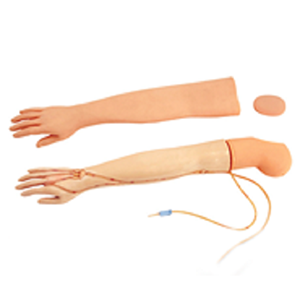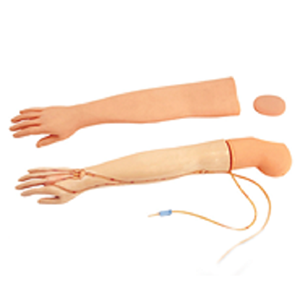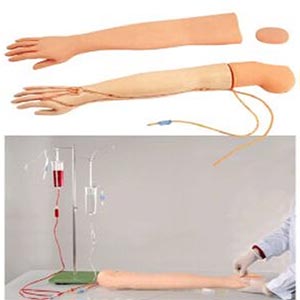ADA MED SUPPLY LIMITED
Phone:+86 19937901373
Tel:+86-0379-65160607
Email:adaanatomy@adaanatomy.com

Article tag: Venipuncture Infusion arm model BIX-HS3 Medical teaching model

With the development of medical science and technology, medical training is constantly innovative. Especially in emergency and critical care, venipuncture technology, as a basic and critical skill, often directly affects the treatment effect of patients. In order to help medical staff cope with various complex clinical situations in actual operation, venous puncture infusion arm model came into being. So, is it possible to help students quickly grasp and cope with these complex situations?

Venipuncture Infusion arm model
The training value of models: a combination of theory and practice
The venipuncture Infusion arm model allows students to practice venipuncture in a non-clinical setting through a realistic simulation environment. Unlike traditional theoretical learning or paper-based knowledge, modeling provides students with hands-on opportunities. This simulation exercise can help students respond quickly and solve problems when they actually encounter difficulties, especially in the face of difficult puncture vessels, anxious patients or emergency situations, and can improve their clinical judgment and coping ability.
Reproduction of complex situations: step-by-step training from simple to complex
Venipuncture is not always a simple procedure. In some complex clinical Settings, such as obese patients, patients with low blood pressure or other specific conditions, venipuncture is often more difficult. At this point, traditional training models may not be able to fully provide the required skills. The venipuncture infusion arm model allows students to practice how to deal with these sudden challenges by designing different situational simulations, such as the simulation of difficult-to-puncture vessels and the imitation of special situations such as vascular collapse. Through repeated training, the students' skills have been improved and they are able to deal with various complex situations more calmly in the clinic.

Improve operational confidence and skills through simulation
In the face of complex clinical situations, beginners are often easy to be nervous, affecting the operation effect. The advantage of the venipuncture infusion arm model is that it is highly repeatable, and students can accumulate rich experience and operational skills through multiple exercises. This model of "simulation, feedback and practice" helps to build the trainees' operational confidence, thus improving their ability to cope with complex situations.
Data support: Model effect and student performance improvement
Data from a survey of medical institutions and nursing schools showed that participants trained using the venipunction infusion arm model had significantly improved venipunction success rates and operational accuracy. Within six months of using the model, participants' success rate in complex situations in the clinic improved by about 30%, and feedback indicated that participants' confidence in their handling of complex cases also increased significantly.
Conclusion: Bridge between model and clinic
In general, venipunction infusion arm model is an important tool in modern medical education, which can effectively help students improve their skills and adapt to complex clinical situations. It not only provides students with a smooth transition from theory to practice, but also effectively reduces operational errors in the clinic and improves patient safety. In the face of rapidly evolving medical education needs, venipuncture infusion arm model is undoubtedly a key tool to help students quickly master complex operations.